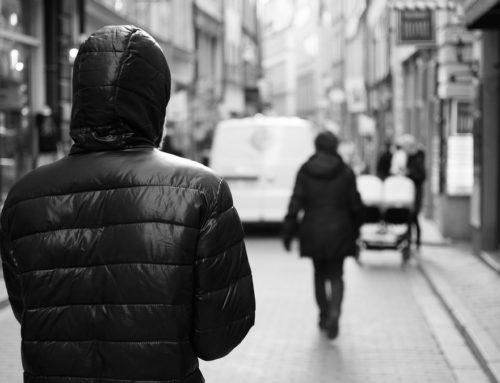“Winter is coming!” Actually, it’s already here and Jack Frost has been nipping at our nose for quite some time now. The reality is as cold as those chilly sub zero temps. The season is beautiful, fun and spectacular for many reasons. Unfortunately, winter can also be a dangerous time of year and bring multiple hazards to New England and beyond. Snow, ice (including black ice!!!) and frozen temps can be harmful.
It is super important to be prepared for winter weather before it strikes. The National Weather Service refers to winter storms as the “Deceptive Killers” because most deaths are indirectly related to the actual storm itself. Instead, people die in traffic accidents on icy roads and of hypothermia from prolonged exposure to cold.
For example, winter cold kills more than twice as many Americans as does summer heat, according to a report by the National Center for Health Statistics. According to SafeWinterRoads.org, over 1,300 people are killed and more than 116,800 people are injured in vehicle crashes on snowy, slushy or icy pavement annually. The ice and snow creates dangerous conditions as The Centers for Disease Control and Prevention reports that about 1 million Americans are injured and 17,000 people die, as a result of slip and fall injuries every year. From 1999 to 2011, a total of 16,911 deaths in the United States, an average of 1,301 per year, were associated with exposure to excessive natural cold. In 2015 almost 56,714 individuals were injured while participating in the winter sports of snowmobiling, snowboarding and ice skating and required treatment in emergency rooms, according to the National Safety Council.
Road ice is very slippery stuff, especially the kind you can’t see: Black Ice. The name is a little misleading as black ice is actually completely clear. Since the coating of ice allows you to see the road, it can be really hard to know when it’s present before it’s too late. Black ice one of the conditions to be on high alert for this time of year.
We’re looking at some tips to keep you safe when the temperature drop and the ice pops up.
What is Black Ice?
What is black ice? It’s a very thin coating of ice that glazes on a surface and makes it very slick. While it’s not really black, it’s nearly transparent, which allows blacktops of roadways to show through, which is why it’s called “black ice.” Black ice forms on roadways when rain falls on roads that are below freezing in temperature. The refreezing of water or snow, as well as sleet, can also result in black ice. It forms when the temperature hovers around 32 degrees Fahrenheit and we get rain, freezing rain, or sleet. When the precipitation hits the roadway that’s colder than 32 degrees, it causes ice to form, creating hazardous driving conditions.
It can form several ways, including:
- Snow melting during the day, making the roads the wet, then refreezing at night as clear ice.
- Rainfall wetting the road and forming puddles before the temperature drops and freezes solid.
- When moisture in the air condenses and forms fog or dew that then freezes on the road
Ways to Spot Black Ice
Unfortunately, black ice is wicked hard to see, especially when there is no sunlight illuminating the surface of the road which can sometimes create a glare. At night, it is nearly impossible to see. Luckily, there are some other warning signs you can look for. But wait, how do you spot something that’s so hard to see? At night, look for patches of pavement that are slightly darker and duller than the rest of the road. During the daytime, look for glossy, wet-looking surfaces in or around shaded parts of the road. Another trick would be to know where it forms and areas prone to these conditions.
Some examples include:
- bridges
- overpasses
- bottoms of hills where water runoff can pool up
- less traveled and suburban roads
- shaded areas
- floors of mountain valleys
- along tree lined streets
- when temperature dips, especially from sunset to sunrise
- any temp in the 40s and below
Tips on Foot
According to safetylineloneworker.com:
- Wear proper footwear
Wear shoes with good grip and traction. If your shoes have poor traction, you can improve their grip by scuffing up the soles before heading out into freezing conditions.
- Do the shuffle
Walk like a penguin! Shuffle your feet to avoid slipping, and use handrails whenever possible. Try to maintain as much contact with the ground as you can.
- Maintain your walkways
Shovel your driveway to reduce snow melt, and use sand to create traction on walkways and driveways. Use salt to keep high traffic walkways de-iced.
Tips If You Hit Black Ice
AAA offers the following tips on how to stay safe for drivers who encounter black ice while driving:
- Drivers should always be aware of and on the lookout for black ice. Pavement with black ice will be slightly darker and duller than the rest of the road surface; ice commonly forms on highly shaded areas, infrequently traveled roads, bridges and overpasses.
- Use extreme caution on bridges and overpasses, which typically freeze first and melt last. Even if the roadway leading up to a bridge appears to be fine, use caution as the bridge itself could be covered in a sheet of ice.
- Never use cruise control during winter driving, especially when there is a strong chance of ice and slippery conditions.
- Avoid unnecessarily changing lanes while driving, which increases your chances of hitting a patch of ice between lanes that could cause you to lose control of the vehicle. Expect to take more time during winter driving.
- Drive, turn and brake slowly, adjusting speed to road conditions and leaving ample stopping room (three times more than usual) and watching for brakelights, fishtailing or sideways cars that could indicate freezing roads, and emergency flashers.
- Vehicle tires struggle to maintain traction on ice. When driving in slippery conditions, avoid braking on ice. If you approach a patch of ice, try to brake in advance and control the skid by easing off the accelerator and steering in the direction you want the front of the car to go.
- If you have antilock brakes, do not pump the pedal; the vibrations and pulsating against your foot when you press down are the system working when your vehicle loses traction. For drivers without antilock brakes, use “threshold braking,” keeping your heel on the floor and using the ball of your foot to apply firm, steady pressure on the pedal to the “threshold” of locking your brakes; removing your heel from the floor could cause your brakes to lock.
- Use your low-beam headlights in ice driving conditions and during freezing rain.
- Remember, four-wheel drive doesn’t help you stop any faster. Your four-wheel-drive vehicle will still lose traction when driving in icy conditions.
- Keep a winter weather kit in your car, containing an ice scraper, blanket, flashlight with extra batteries, bag of kitty litter, shovel and charged cell phone, as well as reflective triangles or flares, cloth or paper towels and jumper cables.
- Invest in the right tires. Winter tires are your best bet when driving during freezing weather.
More Tips
- Stay calm cool and collected so you can think straight.
- Slow down and reduce speed!
- Stay off snowy, icy roads all together!
- Wear your seatbelt!
- Pay close attention to the weather.
- Don’t be overconfident or cocky driving on icy roads.
- Watch for tire spray.
- Remember you aren’t invincible.
It’s clear that winter storms and cold temperatures can be hazardous. Stay safe and healthy by planning ahead. Although the harsh winter comes as no surprise, many of us are not ready for its arrival. If you are prepared for the potential dangers of winter, you will be more likely to stay safe when the temp drops and snow falls. When well prepared for winter, you’re free to enjoy normal thrills that accompany the season.
If you’ve been injured in an accident, call Schulze Law.
https://lifehacker.com/
https://weather.com/
https://northeast.aaa.com/
http://icyroadsafety.com/tips.shtml






